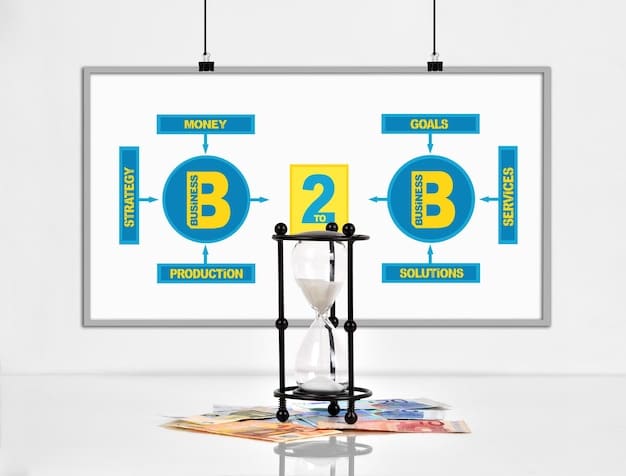Tax Planning for Small Business Owners: Maximize Savings

Tax planning for small business owners involves strategic approaches to minimize tax liabilities through deductions, credits, and optimized business structures.
Navigating the complexities of taxes can be daunting for small business owners. However, with effective tax planning for small business owners, you can minimize your tax liabilities and maximize your savings. This guide explores key strategies to help you optimize your financial planning and keep more money in your business.
Understanding the Basics of Tax Planning for Small Businesses
Tax planning is an essential aspect of running a successful small business. It involves analyzing your business operations to identify opportunities for reducing your tax burden. By understanding the basics, you can make informed decisions that positively impact your bottom line.
Effective tax planning isn’t just about minimizing taxes; it also involves ensuring compliance with all applicable tax laws and regulations. This proactive approach can help you avoid costly penalties and audits.
Why Tax Planning Matters
Strategic tax planning offers several key benefits. It allows you to take full advantage of available deductions and credits, optimize your business structure, and plan for future tax obligations.
Common Tax Challenges for Small Businesses
- Lack of Awareness: Many small business owners are unaware of potential tax-saving opportunities.
- Complexity: The tax code can be complex and challenging to navigate.
- Time Constraints: Managing day-to-day operations often leaves little time for effective tax planning.
Overcoming these challenges requires a proactive approach to tax planning, involving careful analysis of your financial situation and consultation with tax professionals.
Tax planning is not a one-time event; it’s an ongoing process that should be integrated into your overall business strategy. Regular reviews and adjustments can help you adapt to changing tax laws and business conditions.
Choosing the Right Business Structure for Tax Efficiency
The legal structure of your business has a significant impact on your tax obligations. Different structures offer different tax advantages and liabilities. Selecting the right structure is a foundational step in effective tax planning.
The most common business structures include sole proprietorships, partnerships, S corporations, and C corporations. Each has its own set of tax implications and requirements.

Sole Proprietorships and Partnerships
Sole proprietorships and partnerships are pass-through entities, meaning that business income is taxed at the individual level. This can simplify tax reporting but may not offer the same level of tax benefits as other structures.
These structures are relatively easy to set up and maintain, making them popular choices for small businesses. However, owners are personally liable for business debts and obligations.
S Corporations
- Pass-Through Taxation: Income and losses are passed through to the owners’ individual tax returns.
- Self-Employment Tax Savings: Owners can be classified as employees and pay themselves a salary, reducing self-employment taxes.
- Complex Requirements: S corporations have stricter compliance requirements than sole proprietorships or partnerships.
An S corporation can be advantageous for reducing self-employment taxes. By paying yourself a reasonable salary and taking the remaining profits as distributions, you can lower your overall tax burden.
Choosing the right business structure requires careful consideration of your business needs, financial situation, and long-term goals. Consulting with a tax advisor can help you make an informed decision.
Leveraging Deductions and Credits to Reduce Your Taxable Income
One of the most effective ways to minimize your tax liabilities is by taking advantage of all available deductions and credits. These tax incentives can significantly reduce your taxable income and overall tax bill.
Deductions and credits are designed to encourage specific business activities and provide tax relief. Staying informed about these incentives is crucial for effective tax planning.
Common Business Deductions
Business expenses that are ordinary and necessary can be deducted from your taxable income. These expenses include rent, utilities, salaries, and supplies.
Keeping accurate records is essential for claiming these deductions. Documenting your expenses with receipts and invoices will help you substantiate your claims in case of an audit.
Tax Credits for Small Businesses
- Research and Development (R&D) Tax Credit: For businesses engaged in qualifying research activities.
- Work Opportunity Tax Credit (WOTC): For hiring individuals from certain targeted groups.
- Energy Tax Credits: For investing in energy-efficient equipment and technologies.
Tax credits provide a dollar-for-dollar reduction in your tax liability. They can be a valuable tool for reducing your tax burden and promoting business growth.
To maximize your deductions and credits, it’s important to maintain thorough records, stay informed about changes in tax laws, and consult with a tax professional.

Planning for Self-Employment Taxes
Self-employment taxes can be a significant expense for small business owners. These taxes cover Social Security and Medicare and are typically paid by employees and employers. As a self-employed individual, you are responsible for both portions.
Effective planning can help you manage your self-employment tax obligations and minimize their impact on your finances. Understanding the rules and strategies is key.
Understanding Self-Employment Tax
Self-employment tax is calculated on your net earnings from self-employment. It’s important to accurately track your income and expenses to determine your taxable base.
You can deduct one-half of your self-employment tax from your gross income. This deduction helps to reduce your overall tax liability.
Strategies to Minimize Self-Employment Tax
- Form an S Corporation: As mentioned earlier, this can help reduce your self-employment tax burden.
- Maximize Deductions: Claim all eligible business expenses to reduce your net earnings.
- Contribute to Retirement Accounts: Contributions to retirement accounts can reduce your taxable income.
Planning for self-employment taxes requires a comprehensive approach, taking into account your business structure, income, expenses, and retirement savings strategies.
Working with a tax professional can help you navigate the complexities of self-employment tax and develop a plan that meets your specific needs and goals.
Retirement Planning and Tax Advantages
Retirement planning is not only crucial for your future financial security but can also offer immediate tax advantages. Contributing to retirement accounts can reduce your taxable income and help you save for the future.
Small business owners have several retirement plan options available, each with its own set of rules and benefits. Selecting the right plan is an important part of your overall tax and financial strategy.
Retirement Plan Options for Small Business Owners
Common retirement plan options include SEP IRAs, SIMPLE IRAs, and Solo 401(k)s. Each plan has different contribution limits and eligibility requirements.
SEP IRAs are simple to set up and administer, making them a popular choice for sole proprietors and small businesses. SIMPLE IRAs offer a combination of employee and employer contributions.
Tax Benefits of Retirement Contributions
- Tax Deductions: Contributions to retirement accounts are typically tax-deductible.
- Tax-Deferred Growth: Investment earnings grow tax-deferred, meaning you don’t pay taxes until you withdraw the funds in retirement.
- Potential Tax Credits: Some small businesses may be eligible for tax credits for starting a retirement plan.
Retirement planning offers a dual benefit of saving for the future and reducing your current tax liability. Take advantage of these opportunities to secure your financial future.
Consulting with a financial advisor can help you choose the right retirement plan and develop a savings strategy that aligns with your goals and tax situation.
Year-End Tax Planning Strategies
Year-end tax planning is a critical time to review your financial situation and take steps to minimize your tax liability for the current year. Proactive planning can help you make informed decisions and optimize your tax outcome.
This planning involves analyzing your income, expenses, deductions, and credits to identify opportunities for tax savings. It’s also a good time to review your business structure and retirement plan contributions.
Maximizing Deductions and Credits
Make sure you’ve claimed all eligible deductions and credits for the year. This includes business expenses, home office deductions, and retirement contributions.
Consider making additional contributions to retirement accounts before the end of the year to reduce your taxable income. Also, review your estimated tax payments to ensure you’ve met your obligations.
Defer Income and Accelerate Expenses
- Defer Income: Delay receiving income until the next year to postpone paying taxes on it.
- Accelerate Expenses: Pay for deductible expenses before the end of the year to claim them sooner.
- Review Inventory: Assess your inventory and write off any obsolete or unsalable items.
Year-end tax planning requires a thorough review of your financial situation and a proactive approach to minimizing your tax liabilities. Working with a tax professional can help ensure you don’t miss any opportunities.
Effective year-end planning can result in significant tax savings and improved financial outcomes for your small business. Don’t wait until the last minute to start planning.
| Key Point | Brief Description |
|---|---|
| 🏢 Business Structure | Choose the right structure (S Corp, etc.) for tax efficiency. |
| 🧾 Deductions & Credits | Maximize eligible deductions and tax credits to lower taxable income. |
| 💰 Retirement Planning | Utilize retirements plans for tax advantages and future security. |
| 🗓️ Year-End Planning | Review financials and optimize taxes before year-end. |
Frequently Asked Questions
▼
Tax planning involves strategically managing your business finances to minimize tax liabilities while staying compliant with tax laws. It includes identifying available deductions, credits, and optimizing your business structure.
▼
Effective tax planning helps reduce your tax burden, allowing you to reinvest more money into your business. It also ensures compliance, avoiding penalties and audits.
▼
Common deductions include rent, utilities, salaries, supplies, business travel, and home office expenses. Keeping detailed records is essential for claiming these deductions.
▼
An S corporation can reduce self-employment tax by allowing owners to pay themselves a salary and take the remaining profits as distributions, which are not subject to self-employment tax.
▼
Year-end strategies include maximizing deductions, deferring income, accelerating expenses, and reviewing inventory. Consult a tax professional for personalized advice.
Conclusion
Effective tax planning for small business owners is vital for financial health and long-term success. By understanding the basics, choosing the right business structure, leveraging deductions and credits, planning for self-employment taxes, and utilizing retirement plans, you can minimize your tax liabilities and maximize your savings. Always consult with a qualified tax professional to ensure compliance and optimize your tax strategy.





